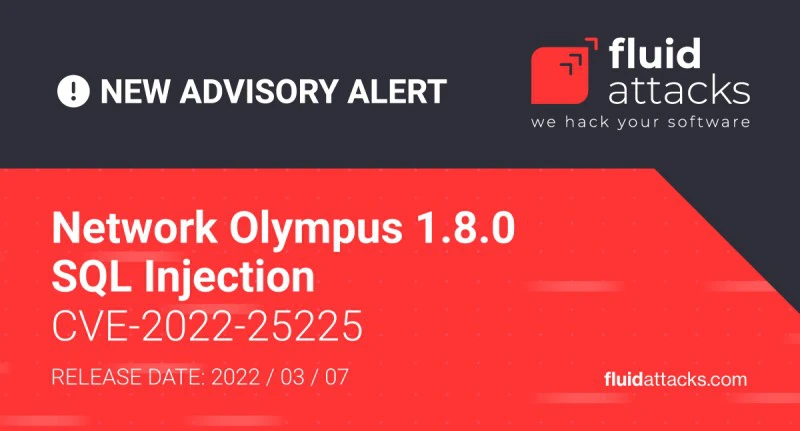| 4 min read
Tons of vulnerabilities are found daily in all kinds of software. You can know this just by looking at the frequency with which the CVE Program tweets. This program identifies, defines and catalogs publicly disclosed cybersecurity vulnerabilities. In fact, you probably see "CVE-..." constantly in your news feed.
Behind the constant flux of common vulnerabilities and exposures, there are the people constantly probing software, gathering vulnerability exploitation evidence and reporting it through the right channels. The Fluid Attacks Research Team does this too, and as we at Fluid Attacks are proudly a CNA (CVE Numbering Authority), the team gets to assign CVE IDs to the zero-day vulnerabilities they discover. After contacting the vendor of the affected software, a team member creates an advisory draft on our dedicated webpage.
In this blog post, we would like to share some information about our Advisories that may shed some light on how the Fluid Attacks Research Team works.
What is in Fluid Attacks' Advisories?
Our Advisories are official documents that communicate information about the vulnerabilities discovered by our research team, such as their CVSSv3 base score, type according to our own extensive list, and CVE ID.
The team also assigns each vulnerability a code name. Why this? Well, you can probably recognize a vulnerability more reliably by its nickname than by its CVE ID. Or do you wanna try to guess what CVE-2021-44228 and CVE-2022-22947 refer to? (Find the nicknames each of these were given at the end of this post. But we invite you to try and guess!)
Code names are assigned by the team member who discovered the vulnerability. They are last names of musicians and artists, much like names given randomly to our clients' organizations on our platform are city names. That's the bit of trivia we've brought you today!
The information about which versions of the product are affected is readily available as well. But whether the entry includes the description of the vulnerability, a proof of concept and a custom exploit, depends on whether this information can be disclosed at the time, following our Disclosure Policy.
Our policy describes the process of how we responsibly communicate third-party product vulnerabilities found by our offensive team or our research team. We update advisory drafts at each relevant event, such as when the vendor replies to the initial contact or releases patches, or when, either in coordinated vulnerability disclosure or lack of vendor response, we must release a proof of concept.
Of course, our policy allows time for vendors to reply, acknowledging the vulnerability or agreeing to a coordinated disclosure along with a patch. These actions should lead to a positive outcome, which is improving software before its vulnerabilities are exploited by threat actors. If the vendor fails to act promptly, our research team proceeds with the responsible disclosure process. In any case, the idea of releasing these advisories is to reduce the risk for users through awareness. Figure 1 works as an example of the images we post on social media accompanying the invitation to read our Advisories. We also promote them in our weekly newsletter.

Figure 1. The image we shared on social media promoting the advisory of a vulnerability in Network Olympus v1.8.0.
Next, we would like to share how the Fluid Attacks Research Team decides what software to investigate.
Of what products does Fluid Attacks release Advisories?
Decidedly, there are too many products to choose from when deciding where to look for vulnerabilities. Our research team browses projects on sources like GitHub and SourceForge, or even looks them up on Google. They focus on open-source software (OSS) and check especially whether it satisfies two criteria. Namely, that it has a security policy and that no other CNA has already called dibs on researching its vulnerabilities.
We already emphasized the importance of the first criterion in our blog post about a guideline for vulnerability disclosure (ISO/IEC 29147). In short, vendors should specify the process and the required content that should be provided for vulnerability reporting. Regarding the second criterion, although it's not mandated by the CVE Program, Fluid Attacks defines its scope as one that does not overlap with that of other CNAs (to put if briefly), thus avoiding discovering the same vulnerability at the same time as another CNA and having to negotiate who should assign the CVE ID.
There are some other attributes that help the team prioritize which OSS to research. For instance, they have noticed there's a big chance of finding vulnerabilities in web applications and OSS with web components. So those are promising targets. They also expect to have a better chance of finding issues in OSS in which vulnerabilities have previously been reported. Lastly, they also suspect OSS with few released versions to more likely have vulnerabilities. However, their primary two criteria are the ones mentioned in the above paragraph. Once the research team selects an OSS, they install the last version on their machines and start looking for vulnerabilities.
Does Fluid Attacks divulge issues found in your system?
Our Continuous Hacking (Advanced plan) service employs highly certified ethical hackers to find vulnerabilities in our clients' systems. In their assessment, our hackers may find zero-days in third-party software. When this happens, we notify the client first and then ask for their permission to proceed with our vulnerability disclosure process, that is, to send the report to the product vendor.
Of course, when it comes to our clients' software, reported vulnerabilities are covered by a Non-Disclosure Agreement. Unless they give us explicit permission to publicly disclose a vulnerability, they and limited Fluid Attacks staff are the only ones who know about it. But we do urge them constantly to remediate it!
At Fluid Attacks we are committed to research. Here you can find a list of our Advisories. Follow us on social media and subscribe to our newsletter to get our latest updates on zero-day vulnerabilities found by the Fluid Attacks Research Team.
Note: The nicknames given to the vulnerabilities mentioned in this post's proposed activity are, respectively, Log4Shell and Spring4Shell. How well did you do?
Recommended blog posts
You might be interested in the following related posts.











